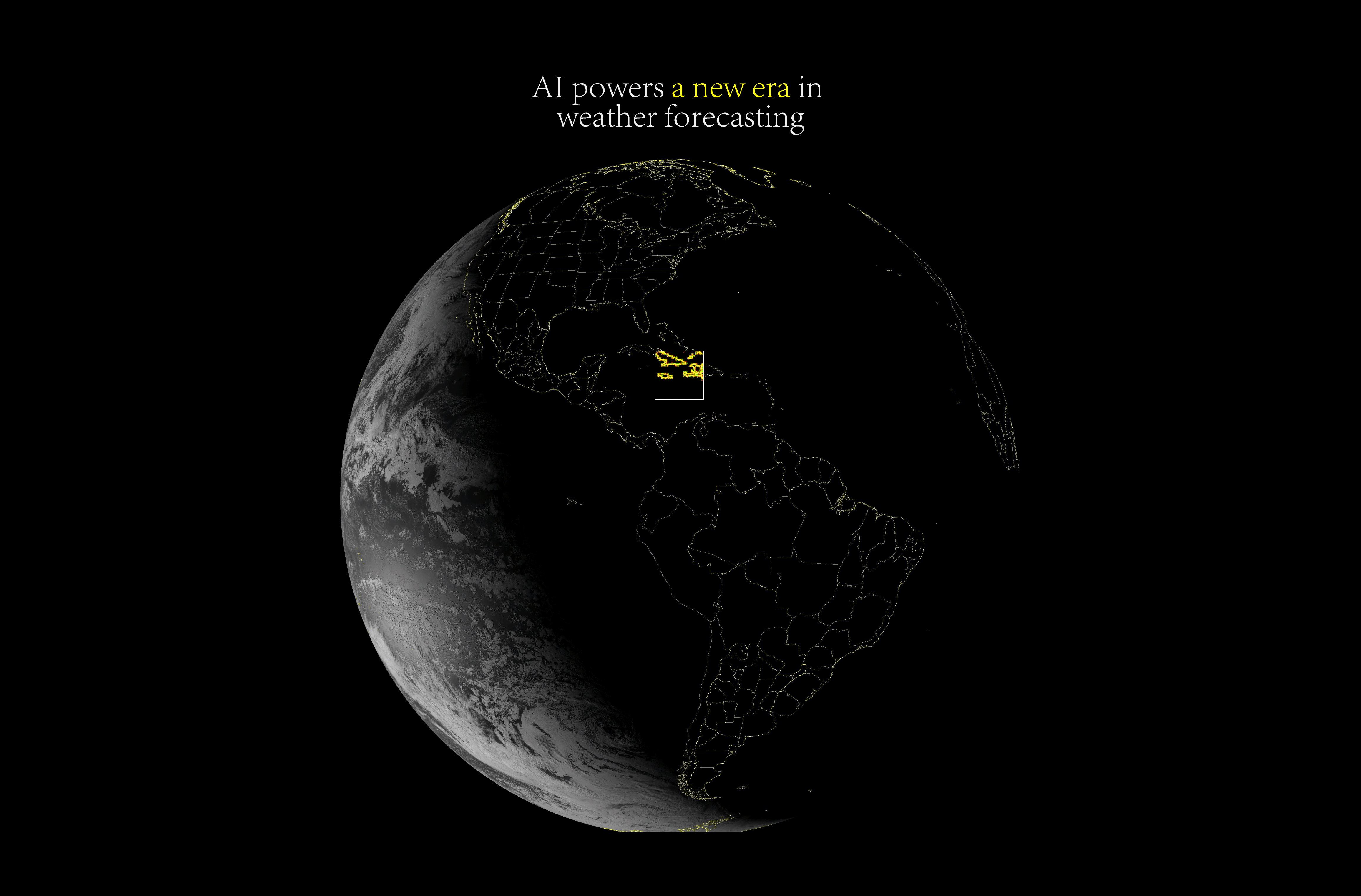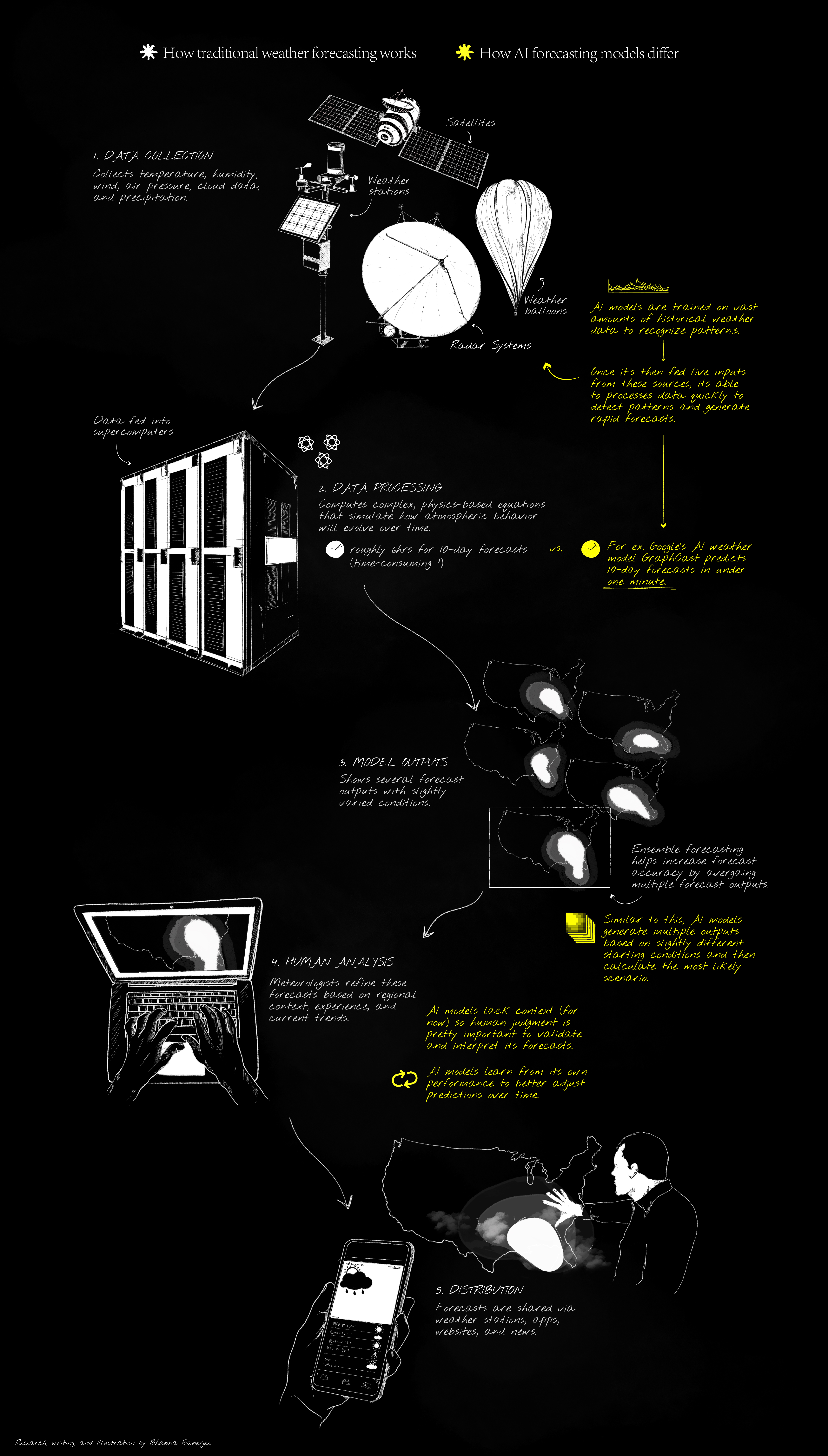

As extreme weather grows more frequent and destructive around the world, a new generation of AI-powered forecasting models is helping meteorologists stay one step ahead.
Built by government weather agencies alongside tech giants like Google, IBM, Microsoft, NVIDIA, Huawei, and a growing number of startups, these AI systems use machine learning to scan massive streams of real-time weather data and generate faster, more energy-efficient forecasts than traditional methods.
In the last decade alone, extreme weather has cost the global economy over $2 trillion, according to the International Chamber of Commerce. In the U.S., the toll has averaged $124 billion a year — and nearly 2,000 lives — over the past five years, per NOAA.
As the damage escalates, the need for sharper, faster forecasts grows more urgent. While researchers still assess the full potential of AI models, early results suggest they could dramatically improve both the speed and accuracy of weather predictions.

For severe weather events like hurricanes and winter storms, small-scale variations in wind speed, temperature, or pressure can significantly alter their intensity and path.
Yet, traditional forecasting models have historically struggled to accurately predict these finer conditions due to their time and resolution constraints.
Traditional models — like the European Centre for Medium-Range Weather Forecasts (ECMWF) — operate on high-power supercomputers that can take up to six hours to compute 10-day forecasts. Producing high-resolution forecasts that can pick up on small-scale variations can take even more time and extreme amounts of computing power.
“Think about an old TV and imagine watching a show from the nineties. It's a bit grainy, right? Especially as you walk closer, it gets grainier,” said Anthony Edwards, a meteorologist at the San Francisco Chronicle. “The same thing happens when these traditional models resolve the whole globe and simulate the weather. The closer you zoom in, you're not able to really pick up the features.”
AI weather models ditch this conventional method and take a different approach. Through machine learning algorithms, these models are first trained to identify relationships and trends in massive amounts of historical weather data. Based on this trained knowledge, they then hunt for patterns in real-time atmospheric data to generate forecasts in a fraction of time and power.
AI models can also detect the granular variations otherwise missed by traditional models by analyzing a wider range of variables.
In November 2023, Google DeepMind announced that its new AI model GraphCast could “predict hundreds of weather variables over ten days in under one minute.” It also outperformed ECMWF's traditional model — the gold standard in global medium-range forecasting — in 90 percent of the 1,380 variables evaluated.
In October 2024, ECMWF’s own new AI-powered weather model AIFS predicted Hurricane Milton’s landfall in Florida within seven miles, beating traditional model predictions by a margin of over 100 miles.
These early promising results indicate that AI could increasingly help deliver forecasts that target timely evacuations and allocation of resources in the face of severe weather.

Yet, there are scenarios that you can't solely predict based on old weather data, according to Edwards. “With our changing climate, it is possible to have events that we haven't seen in the past.”
Since AI models learn from patterns in decades of historical weather data, it limits the model to predict the future based on what has already happened. Without the understanding of atmospheric physics, it’s still unclear if AI can detect the increasingly frequent weather anomalies.
For example, in the case of the Pacific Northwest heatwave in June 2021 that broke temperature records and caused over 116 deaths across the western U.S., AI models may not have been able to predict what was an extreme outlier when compared to previous summer maximum temperatures.
It’s why human judgment remains essential when interpreting AI forecasts. Since AI models simply run as statistical prediction tools, meteorologists have to use their situational awareness to contextualize its forecasts.
“I don't ignore AI, but I don't rely on it either,” Edwards said. Instead, he combines traditional and AI forecasts to cross-check predictions and determine the most likely scenario.
For Kai Marshland, co-founder at WindBorne Systems, the biggest limitation, however, is the real-time atmospheric data fed into weather models.
“With both AI and traditional models, you need a good range of data on the atmosphere for the starting conditions — the prompt if you will,” Marshland said.
Roughly 85 percent of the Earth's atmosphere, especially over large bodies of water, is invisible in what is known as “weather data deserts”. Since weather forecasts are based on real-time atmospheric conditions, the gaps in this data can significantly hinder the quality of any predictions — either through traditional or AI models.
Marshland’s solution at Windborne Systems was to deploy long-duration smart weather balloons to collect missing data from these remote areas that could feed into their AI model WeatherMesh and help it assess weather systems as a whole.
“It's only ever going to be as good as the data you feed into it. And the fact that AI is so much more computationally efficient means that you can start feeding even more data into it and start getting way better forecasts.